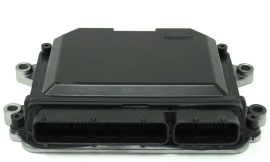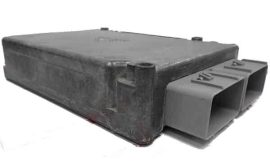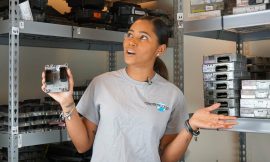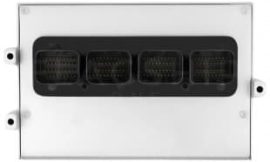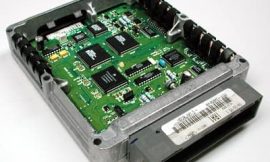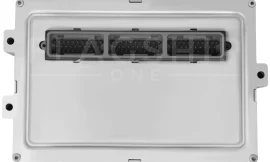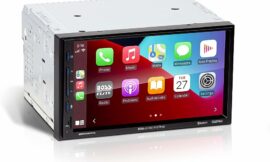Last updated on December 26th, 2023 at 12:49 pm
Is there anything worse than waking up to a check engine light in your vehicle? Most of us have been there, most of the time a check engine light is the bearer of bad news and repair shops are not what really the best way to spend our hard earned cash because of a P0606 DTC
What exactly is the Trouble Code P0606?
Just like any other “P” fault codes this code means that the powertrain control module is involved. This particular trouble code stand for ” ECM Processor Fault” it is a non-specific trouble code that indicates that the ECM ” engine control module ” is not performing as it should and it is not receiving the required data from the other control units.
The P0606 trouble code is a critical issue often encountered in automotive diagnostics. It signifies a malfunction in the control module of the vehicle, more specifically, pointing towards a processor fault. This trouble code could lead to a range of vehicle performance issues if not addressed promptly—these may include sudden stalling, rough idling, or even starting problems. By understanding the root cause of the P0606 trouble code and implementing appropriate solutions, car owners can ensure optimal vehicle performance, enhance safety, and avoid costly repairs in the long run. With professional expertise and step-by-step guidance, rectifying this error can be a straightforward process.
Understanding the P0606 Trouble Code
The P0606 diagnostic trouble code is a generic code indicating an internal computer failure or processor fault. This code suggests that the Engine Control Module (ECM) or Powertrain Control Module (PCM) has detected a processor fault. The ECM/PCM is essentially the vehicle’s brain, controlling a multitude of complex functions related to engine performance and management.
Cars equipped with advanced electronic systems and complex series of sensors, typically modern vehicles, are most commonly affected by the P0606 trouble code. Models like the Ford F-150, Toyota Corolla, and Honda CR-V have been reported to exhibit this error. However, it’s crucial to note that while these models may exhibit the issue more frequently, the P0606 code can affect any vehicle with an onboard computer system.
Causes of the P0606 Code
Faulty ECM/PCM: The most common cause of the P0606 code is a defective Engine Control Module (ECM) or Powertrain Control Module (PCM). These units are the ‘computer’ of the vehicle, controlling numerous functions. A faulty module may be unable to correctly interpret and process the data it receives, leading to the P0606 code.
Electrical Issues: Unusual voltage levels or electrical short circuits can lead to this error. This can happen due to issues within the vehicle’s wiring system, which may result from normal wear and tear, corrosion, or damage inflicted by road debris.
Software Glitches: Sometimes, the P0606 code can be triggered by a software issue within the ECM or PCM. This could range from a software incompatibility to a faulty update, both of which may impair the module’s functionality.
External Influences: Certain external factors can also trigger the P0606 code. For example, a vehicle that has recently endured a severe jolt due to an accident or a pothole may experience this issue. The impact may damage the ECM/PCM or the associated wiring, leading to the error code.
Diagnosing the P0606 Trouble Code
Diagnosing the P0606 code involves a series of systematic steps and requires specific tools. The process is often performed by skilled automotive technicians, but with the right tools and knowledge, car owners can also undertake the preliminary diagnostic process.
Diagnostic Scan Tool: The initial step in diagnosing the P0606 code involves using a diagnostic scan tool, also known as an OBD-II scanner. Connect the scanner to the vehicle’s onboard diagnostic port, usually located under the dashboard, and check for any diagnostic trouble codes (DTCs).
Code Interpretation: If the P0606 code appears, it indicates a processor fault within the ECM or PCM.
Visual Inspection: Following the diagnostic scan, conduct a visual inspection of the ECM/PCM and associated wiring. Look for issues such as loose connections, corroded wires, or physical damage that may have triggered the code.
Voltage and Continuity Testing: Using a multimeter, test for unusual voltage levels or breaks in continuity within the ECM/PCM circuit. This step helps identify any electrical issues that may be causing the problem.
Software Evaluation: The next step involves evaluating the software within the ECM/PCM. If there have been recent updates or if the software appears incompatible, it could be the source of the issue.
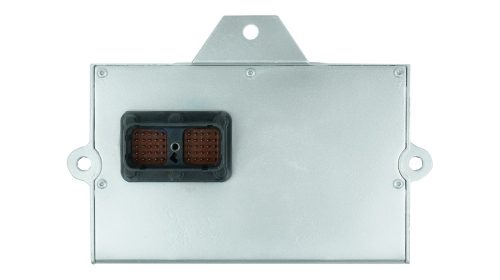
Solutions and Repairs for the P0606 Trouble Code
Addressing the P0606 trouble code effectively can involve both Do-It-Yourself (DIY) solutions and professional repair options. Here are some potential solutions:
DIY Solutions
Check for Loose Connections: Begin by tightening any loose connections that you can safely access. This simple solution often yields significant results and could potentially resolve the issue.
Replace Damaged Wires: Inspect the wiring system for any visible signs of damage. If any wires appear corroded or damaged, replace them. This task requires a wire stripping tool and replacement wires, readily available at automotive stores.
Software Update: If a faulty software update is suspected, consider reverting to a previous version of the software or updating the ECM/PCM software. This solution requires a programming tool compatible with your vehicle’s ECM/PCM.
Professional Repair Options
Engine Control Module (ECM) or Powertrain Control Module (PCM) Replacement: If the issue persists, it might be due to a faulty ECM/PCM. This task is complex and often requires professional assistance. Technicians will use advanced diagnostic tools to confirm the issue before proceeding with the replacement.
Electrical Repair: If the problem is an electrical issue, a professional will need to repair the electrical circuit. This process involves intricate work with the vehicle’s wiring system and should be left to qualified technicians.
Professional Software Diagnostics and Update: If software issues are suspected, professional diagnostics may be required. Technicians will use specialized software diagnostic tools to identify and resolve any software-related problems.
Prevention Tips for the P0606 Code
Preventing the P0606 code is largely dependent on regular maintenance and diligent checks of your vehicle’s systems. Here are some proactive measures you could take:
Regular ECM/PCM Checks: The Engine Control Module (ECM) and Powertrain Control Module (PCM) are integral components that govern your vehicle’s functionality. Regular inspections can help detect and rectify any early signs of malfunction, preventing the P0606 code from surfacing.
Scheduled Vehicle Services: Adhering to your vehicle’s prescribed service schedule ensures that any potential issue is identified and attended to in a timely manner. Regular servicing includes checking the vehicle’s wiring system and software updates, which can prevent the P0606 code.
Software Updates: Ensuring that your vehicle’s ECM/PCM software is up-to-date is vital. Regular software updates can prevent glitches and incompatibilities that may trigger the P0606 code.
Electrical System Maintenance: Regular maintenance of your vehicle’s electrical system can help avoid the P0606 trouble code. This includes checking for loose connections, corroded wires, and potential short circuits.
Professional Inspection and Diagnostics: Occasionally, it would be beneficial to have your vehicle inspected by a professional, especially if it has advanced electronic systems. Skilled technicians possess the necessary expertise and advanced diagnostic tools required to detect complex issues that might be overlooked in a routine check.
In conclusion, the P0606 trouble code signifies a processor fault within the Engine Control Module (ECM) or the Powertrain Control Module (PCM). Diagnosing this issue involves using a diagnostic scan tool, conducting a visual inspection, testing voltage and continuity, and evaluating the software within the ECM/PCM. Solutions range from DIY fixes like checking for loose connections or performing a software update to professional repair options such as ECM/PCM replacement or professional software diagnostics. Preventive measures consist of regular checks of your ECM/PCM, adhering to vehicle service schedules, staying on top of software updates, maintaining the electrical system, and seeking professional inspection and diagnostics. If you encounter the P0606 code, it’s imperative to address the issue promptly—either with DIY solutions or professional assistance—to ensure the smooth functioning of your vehicle and prevent further damage.





